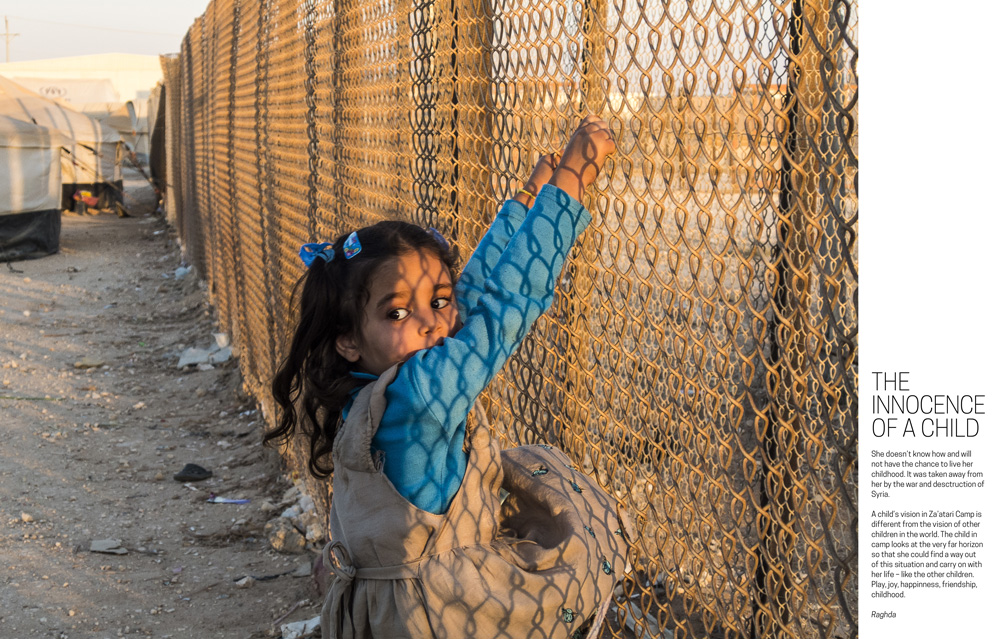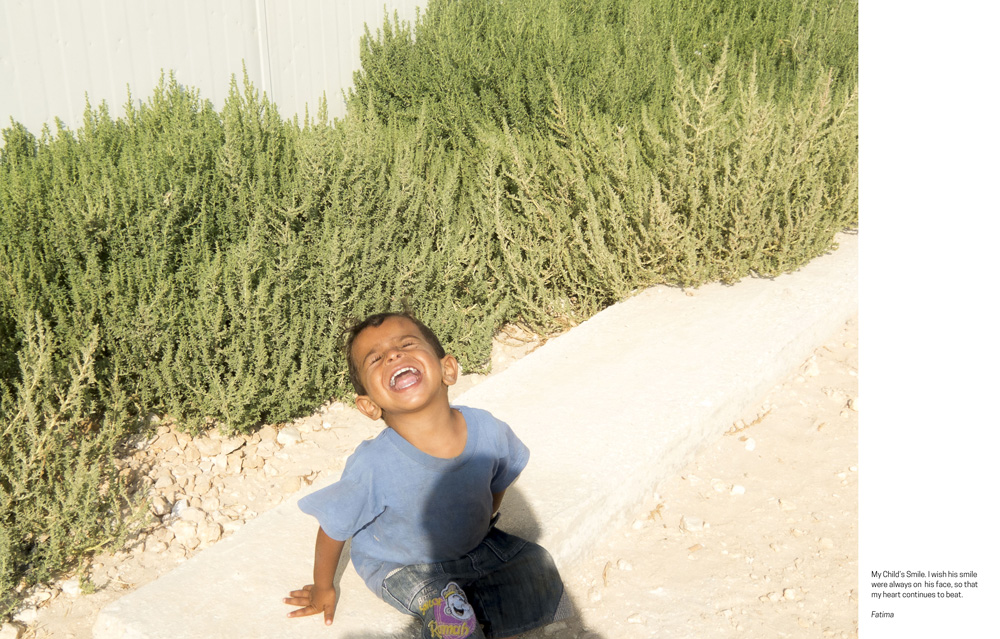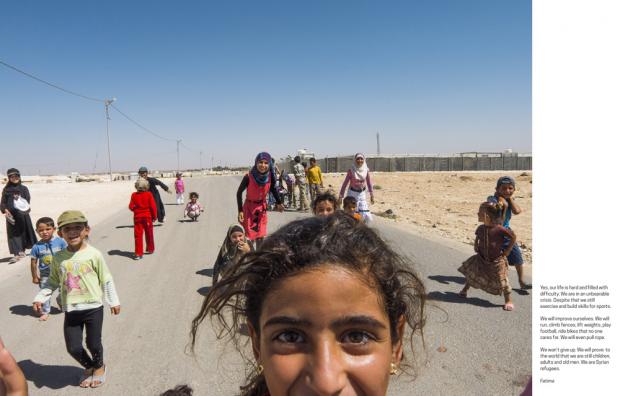The Most Important Picture: Brendan Bannon's Syrian Project
“This is the most important picture,” a Syrian refugee youngster and neophyte photographer says of the blurry image—a photo of a photo really—of himself and his little brother and their father, who was killed in the war in Syria. The only image Khaled has of his father.
And “this is the most powerful one,” Alaa says of a portrait of her mother, showing just one eye behind the subject’s niqab horizontal slit aperture veil. “The eye is the most expressive part of the human,” Alaa explains in her caption. “It’s like a book…that can be read…”
The photos currently on show at City Honors School are the work of Syrian children and young adults in refugee camps in Lebanon and Jordan. The product of intensive—seven hours a day, two weeks in duration—photography workshops conducted by local and world-roving photographer Brendan Bannon, under auspices of the UN High Commission on Refugees (UNHCR).
Bannon said the main goals for the project were twofold. “First, to give these young people who have suffered deeply an incredible experience for a few weeks. To teach them photography, but more importantly, communication skills, creative problem solving, building bridges, opening doors, challenging perceptions. Skills the students would take with them whether they continue with photography or not. And second, give the photographers an opportunity to explain in their own words and pictures their reality.

“Usually we only learn refugee stories from journalists,” he said. “In this project we get to hear from the refugee young people themselves, what they have to tell us about the complex and challenging lives they are living. The photos address tragic and traumatic issues—heartbreaking issues—but also show us a people in extreme circumstances completely engaged in life, shaping their own stories of survival.
“Stories are the heart of the project. So we start with conversation. I start by telling them about myself. And they tell me about themselves. They are hungry to be seen and heard, and express themselves. I tell them we are all learners here, and we are all teachers. That I expect to learn as much from them as they learn from me. I often feel like I’m the one learning the most.”
The age range in the workshops was from youngsters to twenty years old. “At first I worried about the mix of ages and genders,” Bannon said. “But it usually proved to be an asset. Fatima, a nineteen-year-old mother of three and a widow—her husband, the father of the kids, was killed in the war—worked incredibly hard. Mohammed, one of a group of teenage boys in the class, recognized and praised her work, saying, ‘If she can work as hard as she does even while mothering three children, then the rest of the class should push itself and be guided by her example.’”
The program provided the students with cameras, but not right away. Along with conversation, they started by writing and sketching and drawing. Ideas for pictures. Then cardboard cut-out cameras—really cardboard cut-out frames—that they hold up and look through at subjects they might photograph. To get an idea of how the camera sees, focusing on some things, and eliminating others from the field of vision.

One of the first assignments with actual cameras was to make a portrait photo. Maybe the most common genre of photo. ID photos being part of the genre. When because of cultural and political sensitivities—in a Muslim culture, in a refugee camp—the objective was changed to a faceless portrait. Which turned out to be much more instructive about what photography could be and do. Much more imaginatively demanding. How to capture personality—something more even than identity—in actions, symbols, ambience. Alaa’s portrait of her mother was from this assignment.
“One of the things I wanted to teach them,” Bannon said, “was that there are no rules in picture making, aside from respect, for the subject, and the craft, and for yourself. That a good picture can be made from anything, about anything.”
Another assignment was dreams. Remembered asleep at night dreams, or dreams for the future. Hopes, aspirations. Fatima extended the category to nightmares, based on some of her experiences over the previous several years. One photo is of one of her sons wrapped in a white cloth—only his face showing, but his eyes closed, as if deceased—and herself all in black—we see her from behind—bent over him in a posture and attitude of grief.
Another picture shows a young man hurdling athletically over a little scrub vegetation mound in a brushy desert expanse. The caption reads, “I would go this fast upon my return to my home country Syria.”
Another picture is of the moon amid some electrical transmission lines. The caption says in part, “As sure as I can see this moon, I know my beloved can see it while we are apart.”
Another is of a soccer goalie, a kid about six or seven, in front of a red wall serving as the goal, the ball flying toward him, and part of the back and shoulders of the kicker, and long shadows of the kicker and other players plus the photographer extending across the bottom of the picture to the base of the red wall. Bannon calls it “about as perfect a picture of football as I’ve ever seen.” He explains, “You are inside the action. The shadows draw you into the picture, and you share the point of view of the kicker, but empathize with the goalie. The ball is in the air, about to enter the net, but there is still time for the goalie to reach out and make a last-second save…and because this is a still photo, there always will be…an ultimate moment of tension.”
The title of the show is The Most Important Picture. At City Honors through the summer, and in the fall maybe coming to a school nearer you. Even as a component of the school curriculum. Plans and work are underway to develop school curriculum materials based on the photos and workshops, and possibly similar future projects.
THE MOST IMPORTANT PICTURE
City Honors / 186 E North St, Buffalo
cityhonors.org / (716) 816-4230

